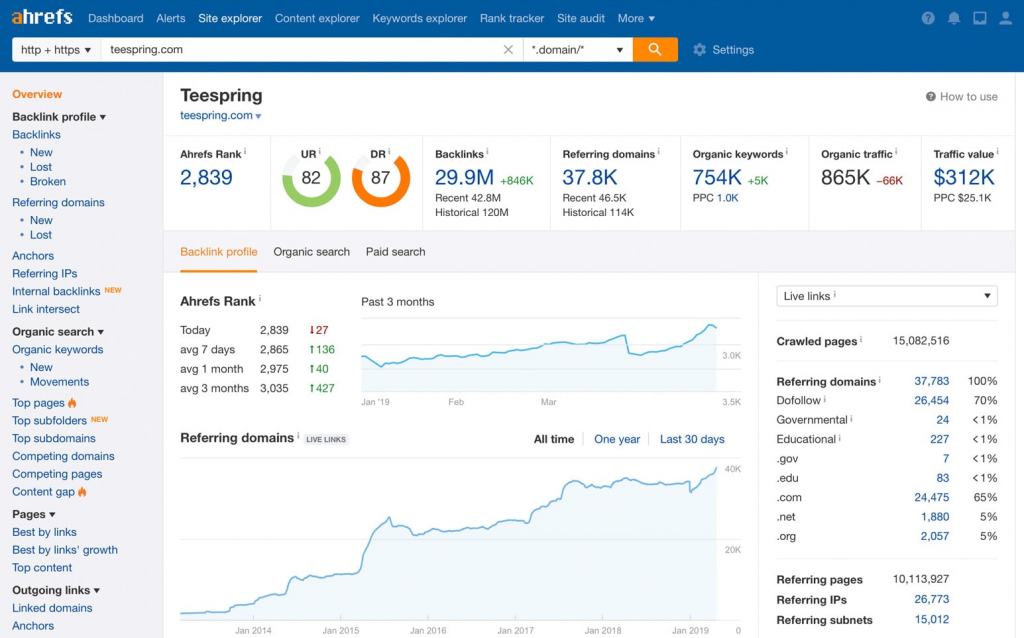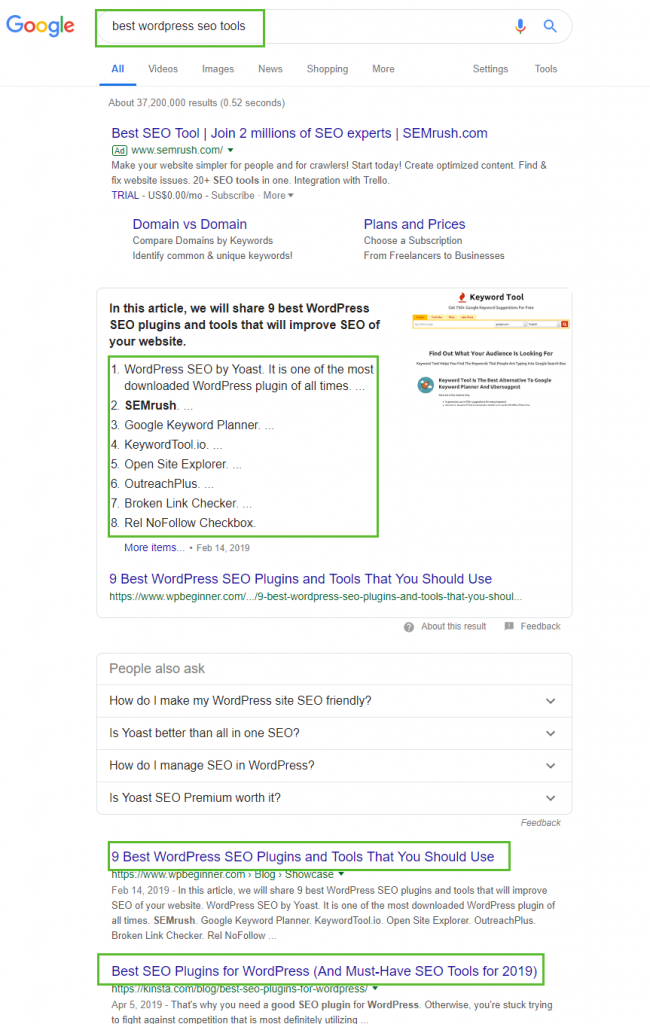
Anyone can write an article, but an SEO-optimized article is a whole different ballgame. EVERYONE wants that #1 spot in Google’s search engine results, especially for those high-traffic keywords. If that’s the case, then you need to master writing SEO-optimized content, where you optimize each post or page with specific keywords.
With these precious keywords strategically placed in your articles, search engines will notice your efforts and just might rank your pages better than others.
If no one visits your page, even if you’re writing the best articles, then what you’re doing is a pointless endeavor. Making sure that your content is SEO-friendly is beyond doubt a TOP priority if you want to grow your website or business.
What Is SEO Friendly Content Writing?
Why is everyone concerned about SEO? SEO, or Search Engine Optimization, is the practice of increasing the number and quality of visitors to your website by improving rankings in search engine results.
Research shows that websites on the first page of Google receive almost 95% of clicks. The higher you place, the more clicks you get.
SEO friendly content writing is a type of content written specifically to be indexed by search engines to rank as high as possible for a given keyword term.
Even though the content needs to attract the search engines, it must still deliver value for the reader.
The days of keyword stuffed pages just to get a top 10 spot are long gone!
Metrics such as dwell time (time a user spends on the page) and user experience mean writing SEO friendly content is about so much more than just words on the page.
Factors to consider include:
- Optimized title and headers
- Optimum content length for the topic
- Keyword choice and relevance
- Optimized images
- Page speed
- And much, much more
I’ll cover some of these in more detail in a short while.
How does SEO work?
Google and Bing score their search results based on the relevance and authority of the web pages they have crawled and included in their web index.
It also checks how your site is using words that people search and type into search engines. The content on your website has to be useful and provide high quality content that helps answer the user’s query.
SEO also involves making sure that your website is accessible and technically sound.
How to do SEO?
SEO involves a combination of technical and creative activities involving onsite SEO and offsite SEO.
Onsite SEO means updating your website to increase organic visibility. Activities such as analyzing and using the words frequently being searched by visitors, making sure that your website can be indexed, and ensuring that the content shows trust and authority are among the ways to improve search engine ranking.
We have listed the latest SEO tools that will help you handle this.
Offsite SEO involves external activities, such as increasing reputable links from other websites, writing for other external publications, and reaching out to influencers and blogger to promote your website.
Although these activities often require skills to optimize your website, they can be learned.
The other option is to hire a professional SEO agency or SEO consultant using recruitment automation software chosen based on reviews and ratings from aggregator sites like Find HR Software to help with your needs.
Writing SEO-optimized articles
The main objective of search engine optimization (SEO) is to have your content be discoverable and relatable for users via search engines such as Google and Bing.
To accomplish this, learning how to write SEO-friendly content is critical.
Writing SEO-friendly content includes:
- Knowing and understanding your audience – Before you begin writing content, you need to consider some of the key terms that relate to the topic you wish to write about. This step usually starts with a question like, “What is my audience searching for?”
- Selecting your topics carefully – Users experience should come first when writing content, while SEO considerations are incorporated naturally within the content. This mindset will guarantee that your content aligns with the ultimate objective of content development: providing helpful information to your current and future audience.
- Writing for your audience and not just for the search engines – Quality content is about creating a great user experience for your audience and answering their questions. Write in a tone/style that perfectly resonates with the audience. For instance, if the targeted audience is students, then write in a simple tone. A rephraser can automate this process, becomes it comes with multiple writing modes. High-quality content is proven helpful in garnering backlinks or external links from other sites, which is also among the top factors. For students facing tight deadlines, using a service that can help write my essay in 6 hours could be a great way to balance quality content creation with time constraints. However, writing for SEO is a process that requires understanding what works for both the audience and the search engines. In some cases, turning to a custom writing service can also help ensure the content aligns with specific audience needs while maintaining originality and coherence.
Start with Research
You ideally want to begin with research. Research the type of questions you’re trying to answer, which keywords to target, length, and type of your article.
SEO tools such as SEMRush or Ahrefs help you with research and with proper keyword optimization. If you want to make sure you’re targeting the right keywords, you definitely should have these tools!


Type of Content
Types of SEO-Friendly Content
If you want to see what kind of articles are currently ranking, just put your target keyword into Google. This is part of research and helps you understand what kind of article you should write.
Additionally, you can explore online resources and research paper services to gain insights into current trends and expert perspectives related to your topic.
You may notice some kind of pattern in the search results.
For example, Google may display listicles or a form of writing in a list format. If you search for the best SEO tools for WordPress, you may find that the search results display listicles.
For example, Google may display listicles or a form of writing in a list format. If you search for the best tools for optimizing a WordPress website for SEO, you may find that the search results display listicles.
Examples of popular SEO friendly content types include:
- Blog posts – The original SEO friendly content type. Blog posts can be about anything. As long as they provide value to the reader and entertains them, blogs can be very successful.
- Evergreen content – Content that remains relevant to your niche over time and can be linked from other content for authority or reference.
- Long form articles – Longer posts or pages that go into great detail on the chosen topic. They are typically 1,500 words and over. The longer the better as long as they are relevant.
- Listicles – Often long form articles with lists outlining best options for a given topic. For example, ‘Best WordPress eCommerce themes’. Short on detail, long on options, which makes them valuable for satisfying user intent.
- Image galleries – Similar to listicles but more image-based. Ideas such as ‘100 beard styles that aren’t hipster’ with properly formatted images and supporting text.
- Infographics – Infographics combined with explanatory content is another form of SEO friendly content. For example, a process diagram with accompanying content that goes into more detail.

Tools That Can Help You Create SEO Friendly Content
There are a number of tools out there that can help you create amazing content. From generating ideas to optimizing the end result, you’re not alone when creating for the web.
Some tools to help you create SEO friendly content include:
Buzzsumo
Buzzsumo is great for assessing topics for content and seeing how popular it is. You also have the option to see how many other people are writing on the same topic and assessing the quality of that competing content.
Google helps with competitor research, topic research and People Also Ask. It should be your go-to tool when trying to come up with topic ideas.
Check competing content, assess their angle, what they did well and how you can improve.
Keyword Density Checker
The Keyword Density Checker is useful for making sure you haven’t placed too many keyword terms into content. Even the best handcrafted content can seem spammy to a search engine. This is a way to check.
Ubersuggest
Ubersuggest is another excellent tool for competitor analysis. Add the URL of a competitor to see how they are performing, where you can outperform and check any areas they have overlooked. You can then create your own SEO optimized content to outperform them.
Ginger
Ginger is a writing assistant that can help generate content, improve your style and optimize it for readers. The tool also helps you translate it into other languages, which can help you compete for every language you translate into.
Length of the article
If you want to know the typical length of articles that rank your target keyword, you can use a free tool called SEO Rambler.
If the first-page average word count is 2,445 and the top 3 average word count is 3,576, you have to make sure that the article that you’re going to write is more than that.
You should ideally write content that’s at least more than 3,600 words in that instance.

Now, you need to create an outline of your content. You can get an idea by analyzing the top 10 results of the target keyword.
People also ask
If you search for your target keyword in Google search, you will notice the “People also ask” section. You may want to select the questions that are most relevant to your topic and answer these questions in your article.
If you click on one of these questions, you will notice that more items will display on the list. This helps you find more questions that you can answer in your article and this is one smart way of optimizing it.

Now, go ahead and write that article!
Actionable Tips for Writing SEO-optimized Content
Once you’ve written the content, here are a few more tips to enhance your article’s SEO.
1. Post title and meta title
The post title is how your readers see the title of the post on your website. The meta title is how search engines will show your post in the search results.
It’s vital that you add your target keywords in the meta title because if not, search engines will treat your post title the same as the meta title.
Post titles should be less than 66 characters.
2. Post meta description
Adding meta descriptions is as valuable as adding meta titles on your post as this serves as a sales copy for your post. You need to create a meta description that’s about 156 characters and enticing enough for the visitors to click on it.

So, if you have not done any meta description, better do so now and make sure that every post you write has the potential of driving maximum traffic to your website.
3. Structure Your Content
Structure is key in writing SEO-optimized content. It helps the search engines understand and accurately index your content and helps human visitors make sense of what’s on the page.
Using the correct H1, H2 and H3 headings for all content. Try to keep sections logical and cover all your main points within each.
When writing sub headers, try to keep them descriptive and make sure the content delivers on what the header promises.
Make sure to also include your keywords in sub headers and in the content where they would fit naturally.

4. Use Optimized Images
Page loading speed is a key SEO measure. The faster your page loads, the higher it should place in search engine results pages.
All other things being equal, the faster page ranks highest.
If you use images on your posts and pages, optimizing them is key. Images are probably the largest files on a page, so the smaller they are, the faster they load.
That’s where image optimization comes in.
There are a number of tools out there that can optimize images for SEO. Find one you like and use it to optimize every image you use on the page.
5. Image Alt Attribute
Humans are visually stimulated. It’s part of our hunter heritage and something that’s as true today as it was 15,000 years ago. We find it more relatable when we see visuals, which is why using images in your content is so important.
They increase audience engagement and are another contextual element that can be optimized for organic search. Search engines “read” the alt attributes (“alt text”) and image file names.
If an image is appropriately named and optimized, it’s more likely to show up in image searches for relevant queries.
Most content management system (CMS) platforms have an image alt text field that can be optimized.
Image alt text should be a short, descriptive phrase of the image. Image file names should be saved before uploading photos and should also be a short, descriptive phrase separated by hyphens.
6. Interlink and anchor text
When you write a new post, you can link it back to your old posts so that your readers can read on and stay longer on your site.
Search engines can use interlinks to re-crawl your past posts.
Interlinking helps visitors navigate your website, as well as reduce the bounce rate, which is another crucial factor for increasing your SEO ranking.
Anchor text can make or break your interlinking. Using compelling and intriguing anchor text can cause curiosity in a reader, encouraging them to click the link and stay a little longer on your website.

You can also use the SEO Smart Links and Yoast plugin for automatic internal linking. Or you can browse further the extensive list of alternative SEO plugins.
7. Remove ‘STOP’ words from permalink
Words such as “a”, “an”, “am”, “and,” “the,” and many other common words are ignored by search engines. Including them within links can waste otherwise useful words you could use for targeting.
For example, your post title is “The Best Ways to Make Money,” the permalink by default would be yourdomain.com/the-best-ways-to-make-money.html.
The words “the” and “to” are ‘stop’ words so you could update your permalink to make it yourdomain.com/best-ways-make-money.html.
This is an optional step but can be useful if you’re struggling to remain within character count.
If you do remove stop words, make sure the link still makes sense without it. Otherwise, leave it there.
8. Update Your Content Regularly
Regularly updating website content is a tried and tested SEO-optimization technique.
Google loves fresh content so will assess updated content as it’s published and may rank it higher.
Updating content also enables you to take into account new SEO best practices or changes to how Google ranks content.
Algorithms continuously evolve to help give users what they want, when they want it. What was once best practice when you initially wrote the article may not be best practice now.
Updating gives you a chance to change that.
Plus, humans like fresh content too. If we land on a page that has been there a couple of years, we don’t trust it as much as something published more recently.
For both those reasons, we think updating your content regularly is key. Just how regularly is up to you!
SEO Friendly Content FAQs
How do I know if my content is SEO friendly?
You’ll know if your content is SEO friendly if you follow the best practices outlined in this post. Visitors should love the content and the search engines should index and rank it. It may take a while to know for sure whether your content is SEO friendly or not, but if it ranks well, it must be!
What are SEO friendly features?
SEO friendly features means the search engines can crawl your pages easily, understand what’s on each page, interpret the content, assess its relevance, index it and then rank it. Most of this will happen behind the scenes. As long as you have written genuinely useful SEO friendly content and use an SEO friendly theme, you should be fine.
What does SEO-friendly mean?
SEO-friendly means a page has characteristics that help search engines understand what’s there. A search engine can crawl, index and rank the page with a high probability of understanding it. If that’s taken care of, your content will be featured in search results for the given term.
What is SEO content writing with examples?
SEO content writing considers the needs of search engines as well as the reader. Examples include optimized titles and headers, proper subheadings and hierarchy, keywords relevant to the topic, internal and external links, simple URLs and good readability. There’s more to it of course, but those are the core requirements of SEO content.
Conclusion
As I’ve mentioned, anyone can write content and publish it. But, if you want to rank higher in search engine results, you need to learn how to write SEO-friendly content.
Of course, you don’t want to waste time and effort writing articles and not being read by your target audience, right?
So, give our tips a try and write that optimized article to make your pages hit page 1 of the search engine results.
Don’t forget to tell us how you get on. Share your success stories in the comments below!

An awesome article that helps people to write better SEO optimized content for content marketing.